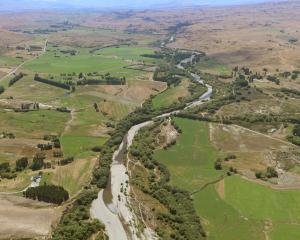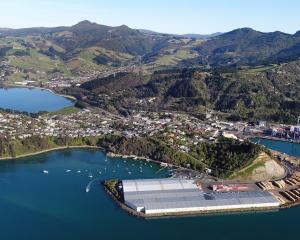Nutrient loads are expected to increase in Otago water, as land use intensifies, which will lead to worsening water quality, the Parliamentary Commissioner for the Environment warns.
The commissioner's latest report, ''Water quality in New Zealand: Land use and nutrient pollution'' uses modelling to predict how changes in land use will affect the amounts of nitrogen and phosphorus in waterways.
''The 'nitrogen stress' is rising year on year in nearly all regions of the country, especially in Canterbury, Southland and Otago, '' commissioner Jan Wright says.
The modelling found the percentage increase in nitrogen loads in Otago from 1996 to 2008 was 10% and it would increase to 13% from 2008 to 2020. Phosphorus loading would increase 1% to 2% in the same periods.
While it was assumed reductions in nutrient losses from mitigation would offset increases from more intensive use of the land by 2020, this was ''optimistic'', the report said.
''Mitigation may be able to 'hold the line' or even reduce nutrient losses in some cases. But mitigation cannot offset the increase in nutrients that comes from large-scale change to more intensive land uses.''
Regional councils have been charged with regulating water quality and quantity under the Resource Management Act.
Otago Regional Council John Threlfall said land use intensification was expected to increase in Otago, especially as further irrigation was being encouraged.
The report highlighted the size of the area affected by intensive agriculture was as much an issue as how intensively areas were farmed.
The council had anticipated the increase and sought to address it with water quality and quantity plan changes introducing tougher rural run-off standards.
There were already issues in South and West Otago and North Otago, and more intensive land use in Central Otago was beginning.
''It's not happened yet but it's likely to happen. What we've seen in the past 10 years we're likely to see again in the next 10 years.''
Otago Regional Council chairman Stephen Woodhead said he believed landowners who chose to intensify were aware they must also put in place mitigation measures.
Increasing irrigation and its reliability was good for regional productivity but came with environmental challenges which was the basis for the council's water plan changes.
''Our challenge will be to `hold' the water quality we've currently got, as well as improve those few areas that need it.''
Continued focus on the science around mitigating nutrient loss was also needed.
Environment Southland Chairman Ali Timms said the council was well aware of the link between changes in land use and levels of nutrients.
Environment Southland's Water and Land 2020 and Beyond project addressed not only the Government's National Policy Statement of Freshwater (NPS), but also the Regional Water Plan for Southland.
''Its initial focus has been on the implementation of good management practices such as nutrient management, riparian planting and stock exclusion.''
Interim measures were also being developed to ''hold the line'' on any further deterioration of water quality.
Additionally, the council had implemented an interim rule requiring any new dairy conversion to obtain a resource consent.












